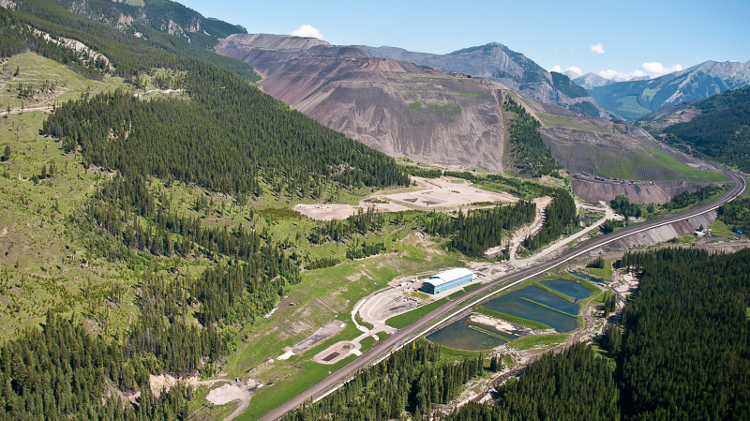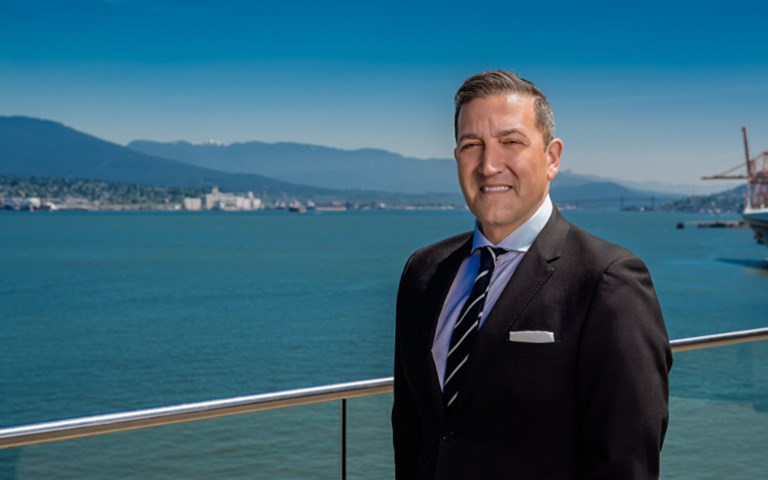Salamis says Integra Resources looked into "at least 20 opportunities" before it settled on the long-dormant DeLamar mine. Courtesy of Integra Resources
Though some companies enter totally unchartered territory with their investments, the team behind Integra Gold and now Integra Resources prefers properties with a proven track record. The new company’s acquisition of Kinross Gold’s DeLamar mine in Idaho in mid-September has the team ready to bring the long-dormant project back to life.
On Tuesday the company announced inferred resources at the site of 117,934,000 tonnes grading at 0.41 grams per tonne (g/t) gold, and 24.34 g/t silver. Integra also announced it was entering into an agreement with a syndicate of agents, led by GMP Securities L.P., to sell subscription receipts totalling approximately $25 million to fund the acquisition.
Integra Resources CEO and president George Salamis spoke with CIM Magazine about the new acquisition, the appeal of old mines and the company’s growth strategy.
CIM: What is the appeal of giving new life to old mines?
Salamis: For us that’s kind of the Integra history. Our roots were essentially founded in taking an old and unloved mine in Val d’Or and turning it into something real. That is what we do best.
When a mine has a history of very high grade production and a history in lower grade production it lowers a lot of risk. There’s an entire record of mining data in your back pocket.
CIM: Was Integra looking at other projects before choosing the DeLamar mine?
Salamis: We sure were. At least 20 opportunities were looked at over the course of a couple of months. After the Integra Gold sale to Eldorado Gold we had a lot of people approaching us with assets that needed a push.
We’d given marching orders to the banking and mining communities to find us options, but we were working with a tight geographic range. We were also looking primarily for precious metals assets as part of our de-risking criteria.
Two or three other assets were being seriously looked at that we’re still considering for some point in the future. For now our objective is to bed this acquisition down and get it going.
CIM: Does seeing recent regulatory troubles in the mining industry in South Africa and Tanzania play a role when choosing where to invest?
Salamis: Certainly. That added element of risk makes the investment case that much tougher. It’s far easier to describe an investment case when you don’t have to spend half the presentation describing the political risk of a particular jurisdiction.
When we were selecting projects we were only willing to take on mining projects in the Americas, in particular, North America.
I’ve spent at least a third of my career working in those jurisdictions that you spoke of. I certainly wasn’t willing to go back down that road. Been there, done that.
CIM: You have previously said that there are “striking similarities” between this acquisition and that of Sigma-Lamaque. What are they?
Salamis: In both cases you’re looking at assets that were mined up until the late 1990s until the gold prices dropped.
Both projects have similarities to the extent that very high grades of precious metals were mined over a very long period of time. They also both had similar access and infrastructure and are both in mining-friendly jurisdictions.
There are differences though – namely that the deposit styles and settings are completely different.
CIM: Could you elaborate on the differences?
Salamis: The main difference we’re looking at is age. While Sigma-Lamaque is about 2.6 billion years old, DeLamar is only about 15 million years old.
The deposit style at Sigma-Lamaque is an orogenic gold deposit that is found a lot in Ontario and Quebec. At DeLamar it is a low-sulphidation epithermal gold-silver deposit. The placement within the earth’s crust is very different – orogenic deposits can be formed kilometres below the earth’s surface while epithermal deposits are much closer to the surface.
CIM: Are you looking at doing something similar to the Gold Rush Challenge with your new mine?
Salamis: We are going to employ new technology, but there’s nothing firmly planned yet. Artificial intelligence and machine learning have advanced since the “old days” of the Gold Rush Challenge. Why wouldn’t we use them? They are great tools.
CIM: Should we expect any more news on DeLamar or other projects in the near future?
Salamis: We are going to try to get a drill program started at DeLamar in the first quarter of 2018 depending on the weather. That project hasn’t seen a modern drill program since the early 1990s. After that we have about 20,000 metres of drilling to do over the next 18 months – more than DeLamar has had in years.
This interview has been condensed and edited for clarity.




